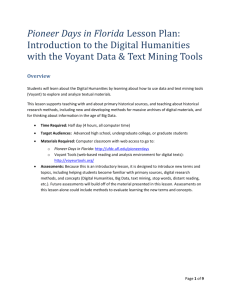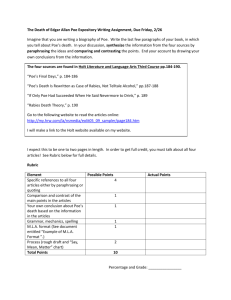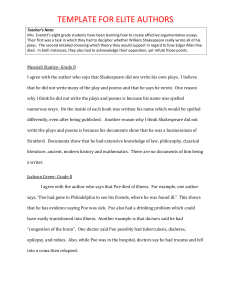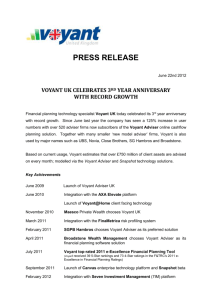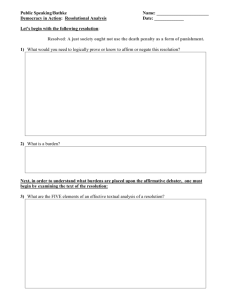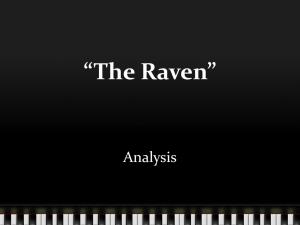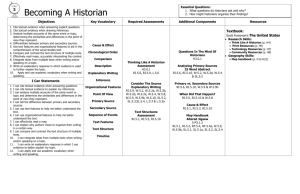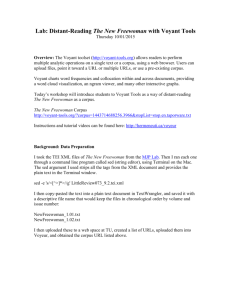Assignment from Close to Distant Reading
advertisement
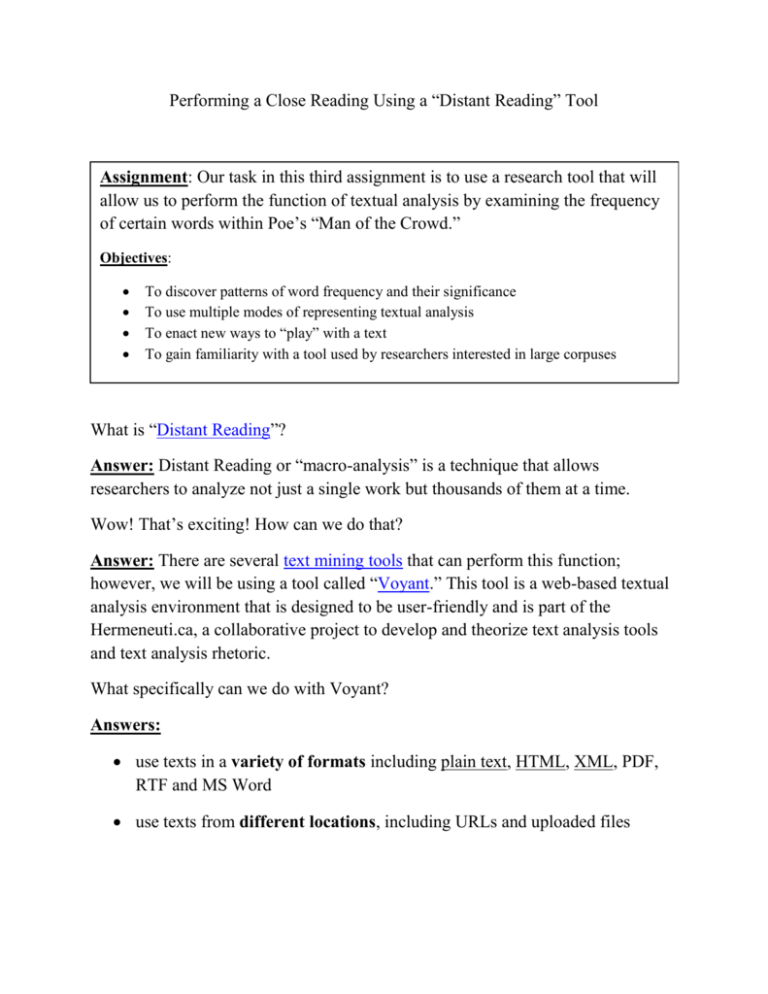
Performing a Close Reading Using a “Distant Reading” Tool Assignment: Our task in this third assignment is to use a research tool that will allow us to perform the function of textual analysis by examining the frequency of certain words within Poe’s “Man of the Crowd.” Objectives: To discover patterns of word frequency and their significance To use multiple modes of representing textual analysis To enact new ways to “play” with a text To gain familiarity with a tool used by researchers interested in large corpuses What is “Distant Reading”? Answer: Distant Reading or “macro-analysis” is a technique that allows researchers to analyze not just a single work but thousands of them at a time. Wow! That’s exciting! How can we do that? Answer: There are several text mining tools that can perform this function; however, we will be using a tool called “Voyant.” This tool is a web-based textual analysis environment that is designed to be user-friendly and is part of the Hermeneuti.ca, a collaborative project to develop and theorize text analysis tools and text analysis rhetoric. What specifically can we do with Voyant? Answers: use texts in a variety of formats including plain text, HTML, XML, PDF, RTF and MS Word use texts from different locations, including URLs and uploaded files perform lexical analysis including the study of frequency and distribution data; in particular export data into other tools (as XML, tab separated values, etc.) embed live tools into remote web sites that can accompany or complement your own content How will we use it with Poe’s “The Man of the Crowd”? Answer: Though Poe’s tale is a single, rather short work, we will use this distant reading tool to analyze patterns and frequency of words and phrases. This will help us build a better understanding of the process of formal analysis and the skill of close reading. Since we began this process by mapping the parts of the whole, this stage in our discovery process entails considering the relative importance of words and phrases to the whole. Moreover, this process will assist us in confronting the problematic statement: poetic form and poetic meaning are inseparable. Directions: We will begin by opening the Voyant page. Copy and paste the URL for the electronic version of the tale in the box below “Add Texts.” (A link to the story can be found here). Since the first word cluster will aggregate ALL words in the text, the cluster will look something like this: But, we can tell Voyant to omit prepositions, articles, etc. To do this click on the “Options” icon in the “Summary” section: Then choose the “Taporware” Stop Word list, mark the box to apply the stop list “globally,” and click OK. (You can scroll through the list to see which words will be not be used. This maybe be important if you are looking for stylistic nuances where the predominance of certain conjunctions maybe very informative.) It should now look something like this: Analyzing the Data: We are going to focus on THREE different modes of representing this textual data (1) visualization of word frequency (word cluster) (2) graphical representation of that frequency relative to segments of the text (3) keyword context Questions to answer: Compose a brief response (three to four sentences) to each of the following questions. Post your responses to the questions to your blog and be sure to include “screen-shots” or import the data from each section. What strikes you about the visualization of the word frequency (i.e., the word cluster)? Identify THREE to FIVE words and analyze their frequency over the text. What conclusions (or questions) can you draw from this analysis)? Is there a relational value to these words (that is, does the word “despair” and “crowd” occur at the same time in the text and why might that be significant)? Examine the “Keywords in Context.” How does the word change (or remain static) in context? Can you make a connection between context and the text as a whole? Now select a word (or phrase) in the text that appears only a single time, but struck you as significant. Explain how that relates to one or two of the words that appeared frequently. How did this exercise change the way you saw or understood Poe’s tale? What are the limitations of text mining tools like Voyant? What is left up to the reader to “reveal”? Did it reveal images, motifs, or symbols? Why or why not?
